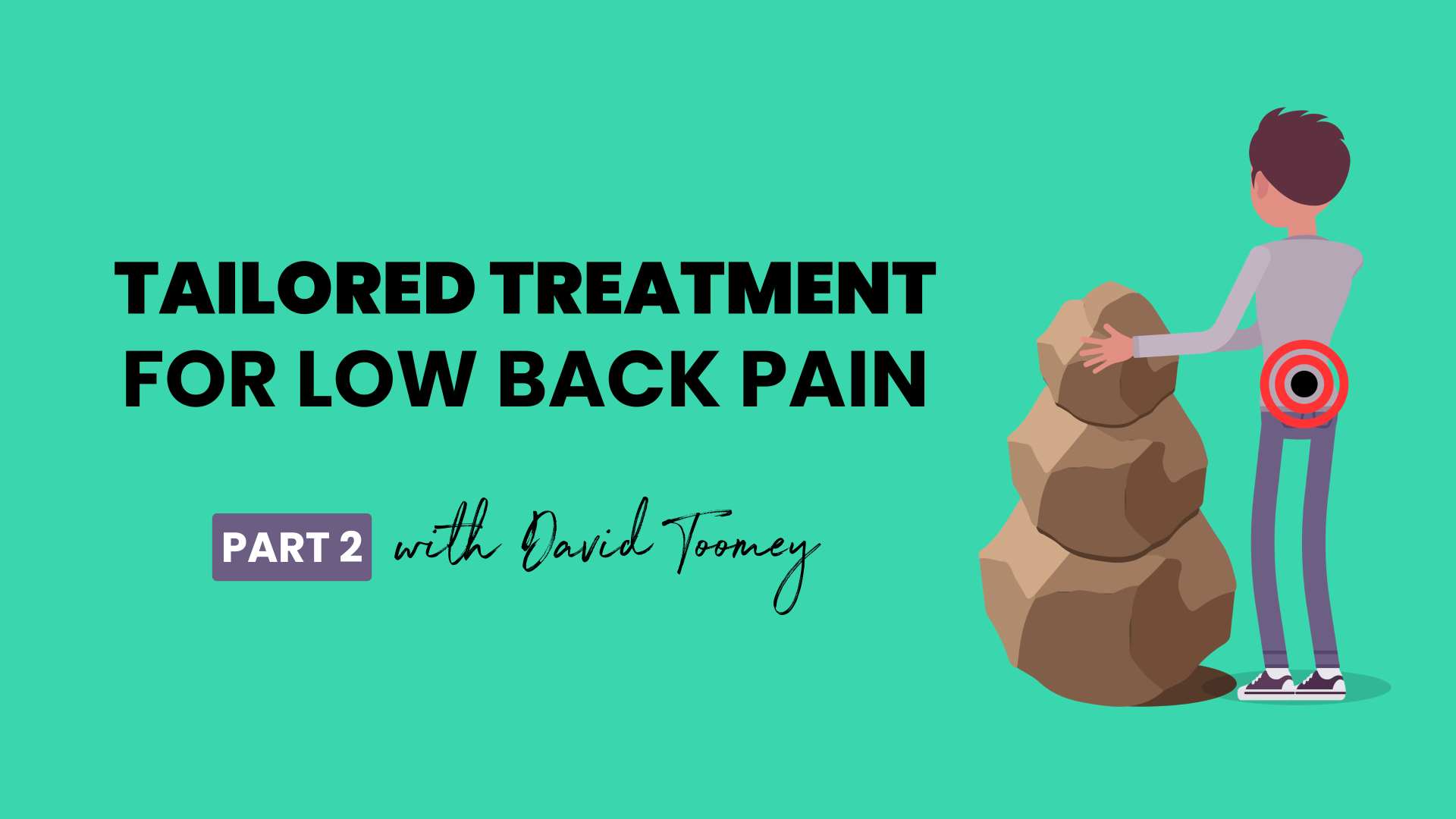There are so many treatment options for low back pain. How do you decide whether you’re going to use manual therapy, exercise, education, acupuncture, tape, a combination, some or all of these?
Do you choose the treatment you like and that you’re skilled in? Or the treatment your patients want?
If you decide that exercise should be a mainstay of your low back pain patient's treatment, how do you decide when to choose stretching, strengthening, repeated movements, general exercise like walking, movement control, yoga or Pilates?
If you decide deadlifts are going to be a key treatment in your low back pain treatment, will your patient respond better to deadlifts with a neutral spine or with a flexed spine?
In this presentation, David Toomey will reveal a system to confidently choose treatment — based on strong clinical reasoning and your patient’s influencing factors (“big rocks”).
You’ll explore case studies of 3 low back pain patients, including Tane - a Cross Fitter; Sarah who had longstanding back pain after doing burpees for charity, and Michelle, who had gone from clinician to clinician, tried low back and glute exercises, stretching, manual therapy, Pilates… but it all just made her pain worse. Find out what made all the difference with each of these patients, so you can successfully treat those patients that leave other clinicians stumped.
You’ll also discover:
- How to confidently choose treatments based on clinical reasoning, so you can stop second-guessing your treatment and start delivering rehab that’s both effective and patient-specific.
- 9 key influencing factors that affect low back pain, helping you identify what’s truly driving each patient’s symptoms.
- How to match your treatments to each patient’s unique influencing factors, so your interventions are relevant, purposeful, and more likely to succeed.
- How to use irritability to guide treatment intensity and progression, allowing you to avoid flare-ups and tailor your approach to the patient’s current state.
- Strategies to work with your patient’s beliefs and expectations, building trust, improving buy-in, and enhancing treatment outcomes.
- When posture, lifting technique, and biomechanics actually matter, so you can use these concepts without falling into nocebic or outdated explanations.
- How to use mini-assessments as mini-treatments, helping you turn every session into a dynamic, responsive part of your clinical reasoning process.
- How to safely reintroduce movement and exercise in patients with high irritability or nociplastic pain features, so you can help even the most sensitive patients make progress.
- How to keep the patient’s big rocks—goals, values, and priorities—at the heart of every treatment decision, ensuring your care is truly patient-centered and leads to better outcomes.
Discover how to tailor your treatment to your low back pain patients, solve cases other clinicians struggle with, and improve your treatment results with this presentation now.
Click here to improve your assessment & diagnostic skills with a free trial Clinical Edge membership

